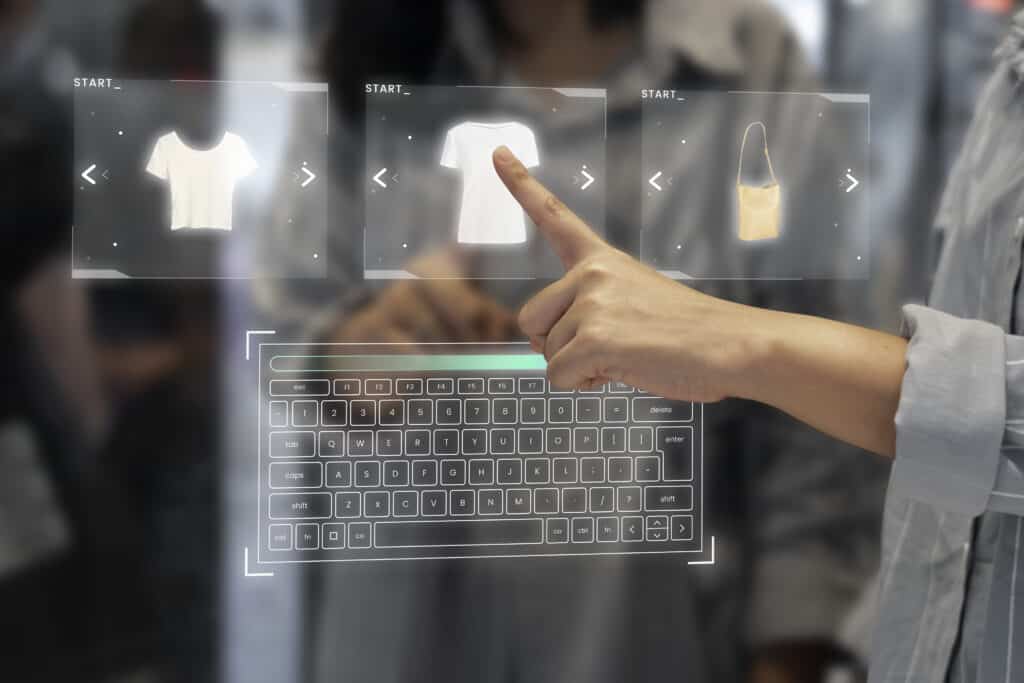Brick-and-mortar stores have long been a staple of the retail industry, offering customers a physical location to browse and purchase products. However, with the rapidly evolving technological landscape, these traditional stores are finding themselves in need of a makeover. One area where technology is making a significant impact is at the point-of-sale (POS). Gone are the days of clunky cash registers and handwritten receipts; today’s retail POS systems are sleek, efficient, and packed with advanced features.
One way technology is reshaping retail POS is through mobile integration. Retailers now let customers pay with their smartphones using Apple Pay and Google Wallet. This makes checkout faster and reduces credit card fraud. Some stores also have mobile apps that help employees assist customers on the sales floor with product info and recommendations.

Another way technology is transforming retail POS is through data analytics. Modern systems can collect valuable customer data during transactions, such as purchase history and preferences. This allows retailers to gain insights into their customers’ shopping habits and tailor their marketing strategies accordingly. By leveraging this data effectively, brick-and-mortar stores can create personalized experiences for their customers that rival those offered by online giants like Amazon.
The Evolution of Retail Pos
Retail point-of-sale (POS) systems have come a long way since the early days of cash registers and hand-written receipts. Today, they are sophisticated, cloud-based platforms that handle much more than just ringing up sales. The evolution of retail POS systems has transformed the way businesses operate, providing numerous benefits for both retailers and consumers alike.
Retailers can easily track inventory, manage customer data, and generate financial reports with a comprehensive POS system. The shift to cloud-based systems eliminates the need for expensive on-premise infrastructure and allows businesses to access sales data securely from anywhere. Cloud-based POS also allows for easy scalability without worrying about server capacity or additional hardware expenses.
The evolution of retail point-of-sale systems has revolutionized how businesses operate by delivering integration capabilities and leveraging cloud technology effectively.
Power Up Your Business with Secure, Affordable,
and Efficient Payment Solutions
The Benefits of Technology in Brick-and-Mortar Stores
Retail point-of-sale (POS) systems have come a long way since the early days of cash registers and hand-written receipts. Today, they are sophisticated, cloud-based platforms that handle much more than just ringing up sales. The evolution of retail POS systems has transformed the way businesses operate, providing numerous benefits for both retailers and consumers alike.

Retailers can easily track inventory, manage customer data, and generate financial reports with a POS system. Cloud-based POS systems are becoming more popular because they eliminate the need for expensive hardware and software maintenance. Businesses can access their sales data securely from anywhere with an internet connection. Cloud-based POS also allows for easy scalability without worrying about server capacity or additional hardware costs.
The evolution of retail point-of-sale systems has revolutionized how businesses operate by delivering integration capabilities and leveraging cloud technology effectively.
Enhancing Customer Experience with Smart Retail Pos Solutions
Retailers can use barcode scanning and inventory management features to track their stock levels in real-time, avoiding over or understocking. Retail POS systems also provide data analytics capabilities for store owners to understand customer preferences and buying patterns. Technology improves operational efficiency and enhances the shopping experience with interactive displays that engage shoppers with captivating visuals and content. Additionally, many stores now offer mobile payment solutions, making it easy for customers to pay using digital wallets or mobile apps.

Brick-and-mortar stores can improve their operations and provide more value to customers by using technology. This can be done through better retail POS systems and creative displays. Technology helps physical retail spaces become more productive, make customers happier, and increase sales. In the fast-changing retail industry, it is crucial to use technology to stay competitive.
Streamlining Operations and Inventory Management
One of the key challenges faced by retail businesses is effectively managing their operations and inventory. Streamlining these processes is essential in order to minimize costs, reduce waste, and improve overall efficiency. By implementing a modern retail point of sale (POS) system, businesses can achieve greater control over their operations and inventory management.
A retail POS system offers several features that help streamline operations. Firstly, it provides real-time inventory tracking, which allows businesses to keep track of stock levels accurately. This enables them to avoid both overstocking and stockouts, leading to improved customer satisfaction and sales. Additionally, a retail POS system automates many manual tasks such as order processing and invoicing. This not only saves time but also reduces errors, ensuring smoother transactions for both customers and staff.
A retail POS system with advanced reporting can give valuable information about sales patterns, popular products, and busy shopping times. This helps businesses make smart decisions about what to buy and how to use their resources. They can keep the right amount of products in stock and find ways to work more efficiently. In today’s competitive market, it’s important for retail businesses to streamline their operations and manage their inventory well. A modern retail POS system can help with this by tracking inventory in real-time, automating tasks, and providing detailed reports. This gives retailers more control and helps them make better decisions based on data.
The Role of Data Analytics in Retail Pos Driving Sales
Data analytics is increasingly important in driving sales because of technology and the availability of customer data. Retailers can analyze customer behavior, preferences, and purchase history to gain insights and understand their target audience. This helps them tailor their marketing strategies. Data analytics is transforming sales through personalized marketing campaigns. Retailers use customer data to create targeted advertisements and promotions that meet individual customers’ needs and interests. This increases conversion rates and improves the shopping experience by offering relevant deals.
Retailers can use data analysis to optimize their inventory levels and reduce costs associated with excess inventory. By analyzing sales patterns and forecasting demand trends, retailers can ensure they have enough stock on hand without overstocking items that may not sell well. This helps meet customers’ demands for popular products while minimizing expenses. Data analytics is crucial for retailers to drive sales and make informed decisions about marketing strategies and inventory management. It leads to increased revenue and improved customer satisfaction. As technology continues to advance, data analytics will play an even more significant role in shaping the future of retail sales.
Challenges and Considerations for Implementing Retail POS Technology
One of the key challenges in implementing retail POS technology is integration. Retailers often have a variety of systems in place, including inventory management, customer relationship management, and accounting software. Ensuring that these systems seamlessly integrate with the new POS technology can be quite complex and time-consuming. This requires thorough planning, testing, and coordination with third-party vendors.

Retail POS technology has many benefits, like making things faster and more accurate. But it also means employees have to learn new things and be open to change. Training programs can help them get comfortable with the system and understand what it can do. It’s important to communicate clearly about how the technology will help both employees and customers, so everyone is excited about it. And don’t forget about security! With new payment methods like NFC or mobile wallets, it’s important to protect customer data from hackers. Use things like encryption, antivirus software, and multi-factor authentication to keep everything safe and follow industry rules.
To succeed with retail POS technology, retailers should address integration, staff training, and security concerns. This will improve the shopping experience for customers.
Conclusion: Embracing the Future of Brick-and-Mortar Retail
Technology is getting better, and stores can use new systems to make shopping easier and increase sales. The future of physical stores is combining them with digital tools. Retail POS systems help stores learn about what customers like and how they shop. With this information, stores can choose what to sell and how to advertise in a way that meets customers’ needs.
Furthermore, physical stores will always hold an advantage when it comes to building trust with customers. Shoppers trust seeing and touching products in person more than online. Brick-and-mortar retailers can thrive by using retail POS systems and providing great in-store experiences.


